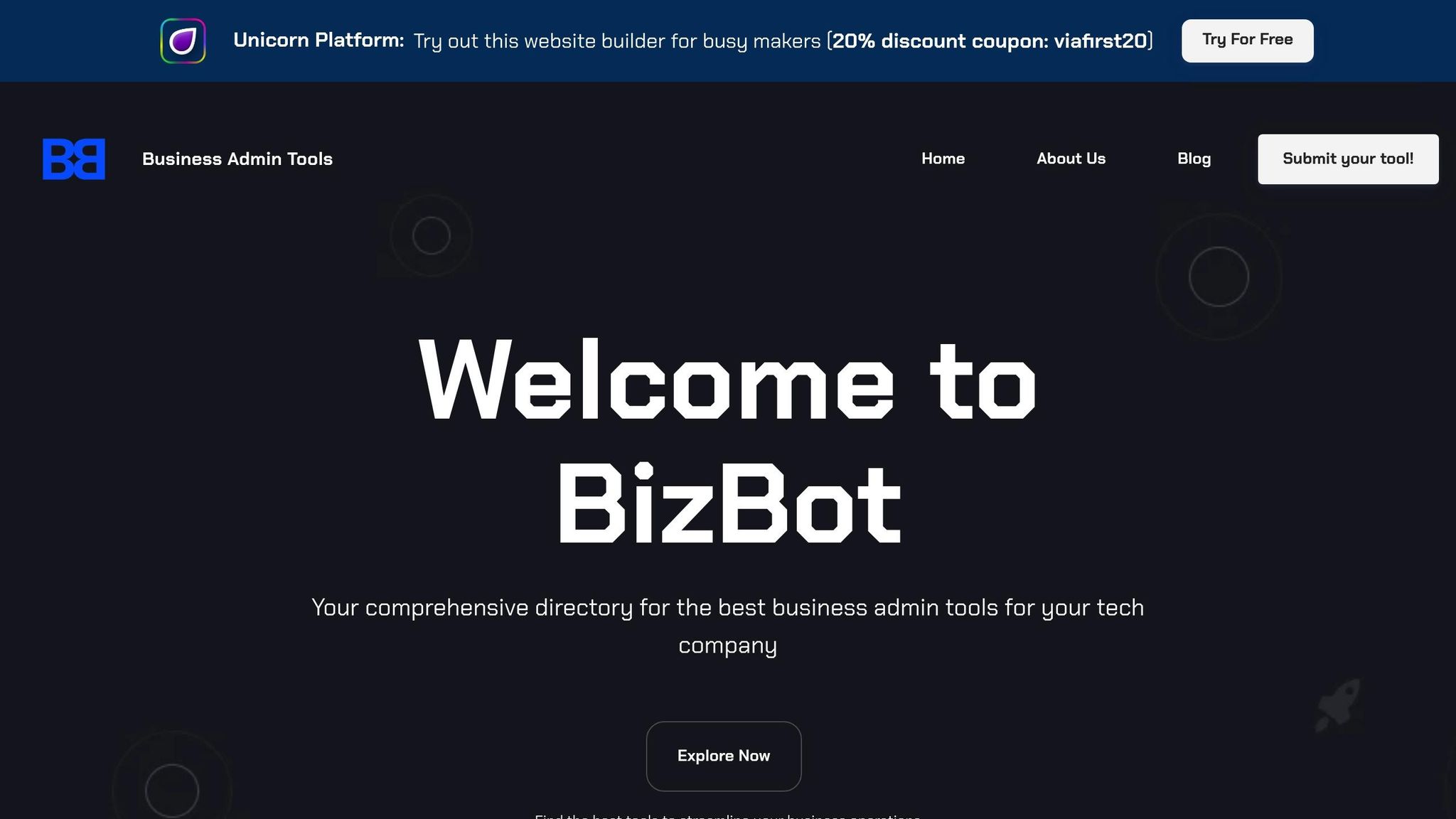Omnichannel personalization ensures consistent, tailored customer experiences across all channels - online and offline. AI enhances this by analyzing real-time data to predict customer needs and deliver dynamic, personalized content. Businesses benefit from improved engagement, streamlined operations, and deeper customer loyalty. Here's what you need to know:
- Unified Customer Data: Centralized platforms gather and organize data from all touchpoints, enabling AI to create accurate customer profiles.
- AI-Driven Journey Orchestration: AI anticipates customer needs and determines the next best action across channels, ensuring a smooth experience.
- Content and Channel Optimization: AI customizes content delivery based on preferences, behavior, and engagement patterns.
To implement this, businesses should:
- Set clear goals and KPIs, focusing on measurable outcomes like conversion rates or customer retention.
- Integrate data across channels to create real-time, unified customer profiles.
- Deploy AI tools gradually, starting with high-impact areas like email or website personalization.
Top tools include Salesforce Marketing Cloud, Adobe Experience Platform, HubSpot Marketing Hub, and Dynamic Yield. For smaller businesses, platforms like Yotpo and BizBot offer accessible solutions. Privacy compliance, data quality, and employee training are critical for success.
Omnichannel personalization is no longer optional - it’s the key to meeting modern customer expectations and staying competitive.
Personalized: Customer Strategy in the Age of AI with David C. Edelman
Core Components of AI-Driven Omnichannel Personalization
When it comes to creating exceptional omnichannel experiences, AI plays a central role. To make these experiences truly seamless and personalized, there are three essential building blocks. These elements ensure businesses can deliver tailored, intelligent interactions across every channel.
Unified Customer Data Platforms
At the heart of any successful omnichannel strategy is a unified customer data platform. Think of it as the central nervous system that connects all customer interactions. Without it, personalization efforts can fall apart, leading to disconnected experiences and missed chances to engage.
These platforms gather and organize data from every interaction - whether it’s a website visit, app usage, email clicks, social media activity, in-store purchases, or even customer service exchanges. By consolidating this scattered information, businesses gain a complete view of each customer’s preferences, behaviors, and history. This unified picture is what AI relies on to make accurate predictions and recommendations.
Real-time data processing is another game-changer. The ability to capture and share information instantly means AI can respond in the moment - whether that’s triggering a personalized message, updating website content, or notifying sales teams. Customers expect this kind of immediacy, and businesses that deliver it stand out.
But none of this works without high-quality data. The platform must handle identity resolution, ensuring the same person is recognized across devices and channels. It also needs to clean up outdated or duplicate data to avoid confusing the AI. With clean, unified data, businesses can orchestrate customer journeys more effectively.
AI-Powered Journey Orchestration
Journey orchestration takes personalization to the next level by making customer experiences not just reactive but proactive. AI uses behavior patterns to anticipate what customers need and guides them through paths that feel natural and helpful.
Here’s how it works: AI constantly evaluates where a customer is in their journey and decides the next best action. That might mean sending a tailored email, showing specific website content, triggering a retargeting ad, or even prompting a customer service rep to step in. These decisions are driven by data, not rigid rules, allowing for flexibility and precision.
Cross-channel coordination is key. For example, if a customer clicks on an email promotion and lands on a website, AI ensures the landing page reflects their interests and past interactions. If they later visit a store, staff can access the same insights to provide a personalized experience.
Timing also matters. AI learns when each customer is most likely to engage, whether that’s a morning email or an evening social media ad. By adapting to these preferences, businesses can boost engagement and avoid overwhelming customers with irrelevant messages. This orchestration also ensures content across all channels is fine-tuned for maximum impact.
Channel and Content Optimization with AI
AI doesn’t just decide what content to show - it determines the best time, place, and format to deliver it. Instead of using the same message everywhere, AI tailors content based on customer preferences, device usage, and engagement habits.
Content personalization goes far beyond adding a customer’s name to an email. AI analyzes everything from past purchases and browsing behavior to seasonal trends and even external factors like weather. This allows businesses to craft messages that truly resonate, whether it’s a product recommendation, a special offer, or a call to action.
Channel optimization ensures customers hear from businesses through their preferred communication methods. For instance, someone who engages more with SMS might receive urgent updates there, while detailed product information might be sent via email. AI also adapts the format for each channel - a recommendation might appear as a detailed email, a quick SMS, or a visual ad on social media.
Finally, AI constantly monitors performance and adjusts strategies. It tracks how different content performs across channels and customer segments, tweaking approaches to improve results. Over time, this creates a self-learning system that gets better at personalization, driving higher engagement and satisfaction.
These three components work together to help businesses deliver the kind of personalized, seamless experiences that today’s customers expect. And in a competitive landscape, that’s a game-changer.
How to Implement AI-Driven Personalization
Implementing AI-driven personalization requires a thoughtful strategy that connects technology with your business goals and customer expectations. A structured approach can help you make steady progress while avoiding common pitfalls along the way.
Set Clear Goals and KPIs
Before diving into AI tools, it’s essential to outline specific, measurable objectives. Broad goals like "improving customer experience" won’t cut it - focus on tangible outcomes that directly impact your business.
Start by pinpointing your biggest challenge. For instance, if shopping cart abandonment is a recurring issue, explore personalized retargeting strategies to reduce those rates. If email engagement is slipping or repeat purchases are lower than expected, establish KPIs like higher average order value, increased customer lifetime value, or better conversion rates across channels.
Tracking engagement metrics is equally important for fostering long-term relationships. Metrics like email open rates, click-through rates, time spent on personalized pages, and social media interactions can reveal how well your efforts resonate with your audience.
Don’t overlook operational efficiency. AI-driven personalization should streamline processes, saving time and reducing manual tasks. Metrics like fewer A/B test iterations, faster campaign launches, and improved team productivity can help justify the investment.
Set achievable timelines for your goals. Some initiatives, like tweaking email subject lines, might show results quickly, while larger projects - like orchestrating a full customer journey - could take months. Balancing short-term wins with long-term objectives helps maintain momentum.
Once your goals are set, it’s time to audit and integrate your data for seamless personalization.
Integrate Data Across Channels
A unified, real-time customer profile is the backbone of effective personalization. Start by auditing all your data sources - CRM, email, e-commerce, social media, and customer service systems - to identify scattered or siloed information.
Identity resolution is crucial. Customers often interact with brands across multiple devices and channels - browsing on a phone, researching on a laptop, and visiting a physical store. Consolidating these interactions into a single profile ensures a cohesive view of their journey.
Real-time data streaming takes personalization to the next level. Instead of relying on batch updates that refresh customer profiles once a day, real-time data enables instant, personalized responses when customers engage with your brand.
Maintaining data quality is non-negotiable. Set up rules for validating, deduplicating, and enriching data so your AI tools base decisions on accurate information.
Privacy compliance should be baked into your process from the start. Regulations like the California Consumer Privacy Act (CCPA) and growing consumer awareness around data privacy mean you need robust consent management systems. These systems should track what data customers agree to share and ensure their preferences are respected.
Once your data is integrated and validated, you’re ready to deploy and test AI solutions.
Deploy and Test AI Solutions
A phased approach works best when rolling out AI-driven personalization. Start with high-impact, low-risk use cases, and refine as you go.
Email personalization and product recommendations on your website are great starting points. These areas are easy to measure and can deliver quick wins, building confidence and providing insights for more complex applications down the road.
A/B testing is essential to find what works best. For example, you can test different recommendation algorithms to see which one resonates most with your audience and product offerings.
Pilot programs targeting specific customer segments or channels are another smart move. For example, a retailer might first personalize email campaigns for its most engaged customers before expanding similar strategies to its website or social media channels. This approach minimizes risk while offering valuable learning opportunities.
During these initial phases, monitor performance closely. AI tools often need fine-tuning as they process real customer data and behavior. Use dashboards to track both business metrics (like conversion rates) and technical performance indicators (like response times and error rates) so you can quickly address any issues.
Scalability should be part of your plan from the beginning. Choose AI platforms and infrastructure that can handle larger data volumes and more complex personalization needs as your customer base grows.
Finally, invest in training and change management. Equip your marketing team to work effectively with AI tools, interpret results, and adjust campaigns strategically. At the same time, ensure your customer service team understands how AI-powered personalization can enhance interactions with customers.
Regular reviews and optimization cycles are key to staying effective. Periodically evaluate your strategies to uncover new opportunities, adapt to changing customer behavior, and fine-tune your approach to keep delivering results.
sbb-itb-d1a6c90
Top AI Tools for Omnichannel Personalization
To create seamless omnichannel experiences, you need the right AI tools that unify data and personalize customer interactions. Fortunately, the market is packed with solutions tailored to every aspect of personalization.
Popular Personalization Platforms
When choosing personalization platforms, look for tools that combine AI-powered insights with robust data management to enhance customer engagement and streamline operations.
Salesforce Marketing Cloud is a powerhouse for AI-driven personalization. With its Einstein AI, the platform analyzes customer behavior to deliver tailored content across multiple channels. Its Journey Builder feature takes it a step further by automating personalized customer journeys that adapt in real time. Businesses often see better email engagement and improved cross-channel campaign results.
Adobe Experience Platform is another top-tier option, offering a Real-Time Customer Data Platform and an AI-powered personalization engine. This platform shines in creating tailored experiences across digital channels. Its machine learning algorithms ensure content recommendations and campaign timing align with individual customer preferences and behaviors.
For small to medium-sized businesses, HubSpot's Marketing Hub delivers personalization without the complexity of enterprise platforms. By combining CRM data with behavioral tracking, it personalizes email campaigns, website content, and lead nurturing workflows. Its smart content feature dynamically adjusts website messaging based on visitor characteristics, and its predictive lead scoring helps sales teams focus on high-conversion prospects.
Dynamic Yield specializes in real-time personalization across web, mobile, and email platforms. It uses machine learning to fine-tune product recommendations, homepage layouts, and email content based on user preferences. Plus, its A/B testing tools let businesses refine their strategies using performance data.
For e-commerce, Yotpo stands out by blending product recommendations with user-generated content. It analyzes browsing habits, purchase history, and customer reviews to suggest relevant products while showcasing social proof to drive conversions.
These platforms cover the customer-facing aspect of personalization, but operational tools are equally important for a cohesive strategy.
BizBot: A Directory for Supporting Tools

While personalization platforms focus on customer engagement, BizBot simplifies the operational side of things. This tool acts as a curated directory, helping businesses find administrative solutions that complement their personalization efforts.
For instance, BizBot's accounting software section highlights tools that track the financial impact of personalization campaigns, making it easier to measure ROI and justify AI investments. Its management tools category includes solutions for board management and shareholder registers - ideal for companies scaling their personalization strategies.
What makes BizBot especially appealing is its focus on freelancers, small businesses, and growing companies. Instead of committing to costly enterprise tools for every operational need, businesses can use BizBot to discover affordable, effective solutions for tasks like expense tracking or digital CFO services.
BizBot also streamlines the process of managing multiple AI subscriptions, saving marketing teams valuable time. This allows them to concentrate on implementing and refining their personalization strategies without getting bogged down by operational details.
As businesses scale their omnichannel personalization efforts, having efficient administrative processes becomes essential. BizBot ensures companies can quickly find tools that integrate seamlessly with their existing tech stack, keeping operations smooth as campaigns grow more complex.
Best Practices and Challenges for US Businesses
Best Practices for US Businesses
Once implementation steps are in motion, US businesses should focus on practices that ensure compliance and effectively engage local audiences.
Make privacy compliance your cornerstone. US businesses must align with state and federal privacy laws when using AI for personalization. For instance, California’s CCPA and Virginia’s CDPA mandate clear consent for data collection and allow consumers to opt out of personalized marketing. Design your personalization strategy with these rules in mind from the very beginning.
Tailor content to regional preferences. American consumers expect brands to grasp local nuances. For example, a coffee chain might promote iced drinks in Phoenix during winter but emphasize hot beverages in Minneapolis. AI tools can analyze regional purchasing habits, weather trends, local events, and other factors to adjust messaging for specific areas.
Keep your brand voice consistent everywhere. Whether customers engage through email, an app, or in-store displays, your AI tools should reflect the same brand personality. Develop detailed brand guidelines that outline tone, visual elements, and messaging priorities. This ensures that while individual recommendations may vary, your overall brand identity remains intact.
Use progressive profiling to build trust. Instead of collecting too much information upfront, gather data gradually. Start with basic preferences, then expand your understanding through purchase history, browsing behavior, and engagement patterns. This approach feels less intrusive and helps create a more complete customer profile over time.
Test strategies across different customer groups. A personalization tactic that resonates with millennials in urban areas might not work for Gen X customers in suburban neighborhoods. Use A/B testing to evaluate AI-driven recommendations across various demographics, regions, and customer lifecycle stages. Document the tactics that yield the best engagement for each group.
Bridge the gap between online and offline channels. If a customer browses products online but completes their purchase in-store, ensure that transaction data is integrated into your AI systems. This creates a comprehensive view of customer behavior and prevents irrelevant or duplicate recommendations. Train store associates to collect email addresses or phone numbers to link offline purchases with digital profiles, ensuring your AI-powered personalization stays effective across all channels.
Common Challenges and Solutions
Data silos hinder personalization efforts. Many US businesses face the challenge of fragmented customer data spread across different departments and systems. Marketing might use one platform, sales another, and customer service yet another. To address this, appoint a dedicated data integration team with executive backing. Invest in customer data platforms that consolidate information from multiple sources into a unified customer view.
Integration hurdles stall progress. Personalization projects often get bogged down by the complexity of connecting various tools. Opt for API-first solutions that integrate seamlessly with your existing systems. Start with a few key integrations and expand gradually to avoid overwhelming your team.
Customer expectations keep evolving. Today’s consumers demand highly tailored experiences, often comparing brands to the level of personalization offered by companies like Amazon. To keep up, regularly survey your customers about their preferences and monitor engagement metrics. Update your AI models quarterly based on this feedback and performance data to stay ahead of shifting demands.
Budget limitations require smart prioritization. Small and medium-sized businesses often can’t afford enterprise-level personalization platforms right away. Focus on affordable, high-impact strategies first. For example, email personalization tends to deliver strong returns with minimal investment. Similarly, website tools like smart content blocks can boost conversions without heavy technical requirements. Use these early wins to justify future investments in more advanced AI solutions.
Resistance to change slows adoption. Employees familiar with manual processes may hesitate to embrace AI-driven tools. Create training programs that demonstrate how AI enhances their work rather than replacing it. For instance, marketing teams can focus on strategy while AI handles routine tasks, and customer service reps can use AI insights to provide more relevant support. Position AI as a tool that boosts productivity, not a threat to jobs.
Tracking ROI across multiple channels is tricky. When customers interact with personalized content across email, social media, websites, and physical stores before making a purchase, it can be hard to measure what’s working. Implement unified tracking systems that follow customers throughout their journey. Use tools that assign credit to multiple touchpoints instead of just the final interaction. This gives a clearer picture of how personalization impacts conversions and helps justify ongoing investment in AI tools.
Seasonal shifts throw off AI models. US retail patterns change dramatically around events like Black Friday, back-to-school shopping, and Christmas. AI models trained on regular purchasing behavior may falter during these peak periods. Build seasonal adjustments into your algorithms or maintain separate models for these times. Review and refine these seasonal strategies annually using data from the previous year’s performance.
Overcoming these challenges requires continuous monitoring and fine-tuning. By addressing these obstacles, businesses can ensure that their AI-powered personalization stays effective and aligned with customer expectations. This approach reinforces earlier recommendations while delivering seamless experiences across all channels.
Conclusion
AI-powered omnichannel personalization has become a must-have for businesses navigating today’s customer-focused marketplace. The proof is in the results: companies that successfully create unified, personalized experiences across all channels see measurable gains in customer engagement, higher conversion rates, and stronger loyalty over time.
At the heart of effective omnichannel personalization is unified customer data. When AI systems can access and analyze this data, they can craft seamless, contextual experiences that feel natural to consumers. Instead of disjointed interactions, customers experience a connected journey that meets their expectations at every touchpoint.
Starting small is key. Focus on personalization efforts in areas like email campaigns and website content where returns are often immediate. These early wins not only build momentum but also provide the evidence needed to justify expanding into more complex personalization efforts, such as social media, mobile apps, and even in-store experiences.
For businesses operating in the U.S., compliance with privacy regulations like CCPA and CDPA is non-negotiable. Designing personalization systems with privacy as a core principle from the outset avoids expensive fixes later and helps establish trust - an essential ingredient for customer engagement.
Admittedly, challenges like integrating new technology and keeping up with shifting consumer expectations are significant. But they’re manageable. Companies that invest in proper staff training, adopt API-first solutions, and ensure their AI systems are adaptable are better equipped to evolve alongside advancements in technology and changes in customer behavior.
The key to staying ahead lies in treating personalization as an ongoing process. Regular testing, refining AI models, and adjusting strategies for seasonal trends ensure your efforts remain effective. With the right tools in place, businesses can dedicate their energy to delivering the kind of personalized experiences that not only meet customer expectations but exceed them - driving growth and satisfaction.
The real question isn’t whether you should implement AI-driven personalization, but how quickly you can scale it across your entire customer experience ecosystem.
FAQs
How can small businesses use AI to achieve omnichannel personalization on a budget?
Small businesses don’t need a massive budget to tap into AI-driven omnichannel personalization. Affordable and easy-to-use tools make it possible to deliver tailored customer experiences without overspending. Look for AI platforms with flexible pricing plans designed specifically for smaller operations. These tools can help streamline marketing efforts, boost customer engagement, and provide real-time insights into customer behavior.
A key strategy is focusing on behavior-based personalization. AI can analyze customer interactions and preferences, allowing businesses to recommend products or content that truly resonate with their audience. By applying these techniques, small businesses can craft smooth, personalized experiences across multiple channels - all while staying within their budget.
How can businesses ensure they comply with privacy regulations when using AI for personalized customer experiences?
To ensure compliance with privacy regulations while leveraging AI for personalization, businesses should begin by crafting clear and straightforward privacy policies. These policies should detail how customer data is collected, used, and protected. Conducting regular privacy audits and data protection assessments is another smart move to spot risks and confirm everything aligns with legal standards.
Another essential step is adopting data minimization practices, meaning only gathering the information that’s absolutely necessary. Pair this with data anonymization techniques to safeguard sensitive details. Staying informed about changes in federal and state privacy laws is equally important, especially as AI and data privacy continue to gain attention. By staying ahead of these developments, businesses can not only stay compliant but also strengthen customer trust.
How can businesses evaluate the effectiveness of AI-powered personalization across multiple channels?
To gauge how well AI-driven personalization is working, businesses should keep an eye on key performance metrics like customer engagement, conversion rates, customer lifetime value (CLV), and cross-channel attribution. These numbers reveal whether personalization efforts are sparking meaningful interactions and contributing to revenue growth.
For a deeper understanding, it's also smart to look at engagement rates for individual channels and monitor how smoothly customers move between them. This helps ensure that personalization delivers a consistent and impactful experience across every touchpoint.


